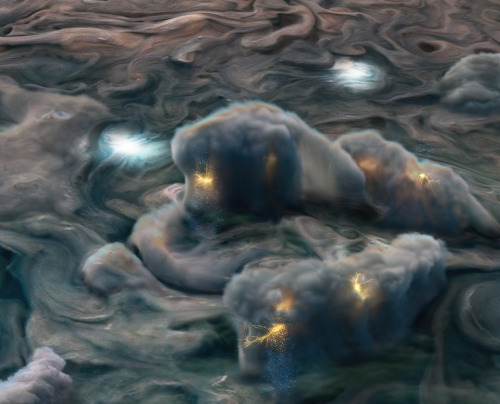Had The Pleasure Of Meeting And Listening To Former Astronaut Scott Kelly As He Related Stories Of His

Had the pleasure of meeting and listening to former astronaut Scott Kelly as he related stories of his life and his year on the International Space Station.
More Posts from Jbrackettssa and Others

Just a quick shot through the eyepiece. Not much, other than the black dot being a planet that is 3,000 miles across and is 57 million miles away. Plus, the big orange thing is another 36 million miles behind that. #space #astronomy #mercurytransit #mercurytransit2019 https://www.instagram.com/p/B4xGXVhH9YB/?igshid=977uiy82c22m
Maybe after a long day at work isn’t the best time for a lecture...

Kids These Days...
Before judging the first round of submissions in the NASA / JPL Name the Mars 2020 Rover Contest, I didn’t quite know what to expect from the various young minds. I knew I was going to see the occasional Rover McRoverface, or the overly complicated acronyms.
However, some of these kids really got what this is all about. Their essays conveyed how much they really want to invest in science and the future of space exploration. You could see the amount of research that went into their name choices. Several times, I had to look up words or the meanings behind possible name choices. Leave it to me to accidentally ok a cool sounding name that belongs to an anime character who farts a lot. (didn’t really happen)
It wasn’t just the scientific names and essays that were rewarding. Some students wrote passionate essays about naming the rover after a beloved relative or pet. The level of respect and/or compassion from the minds of fifth graders almost had me in tears at some points.


New results from our Juno mission suggest the planet is home to “shallow lightning.” An unexpected form of electrical discharge, shallow lightning comes from a unique ammonia-water solution.
It was previously thought that lightning on Jupiter was similar to Earth, forming only in thunderstorms where water exists in all its phases – ice, liquid, and gas. But flashes observed at altitudes too cold for pure liquid water to exist told a different story. This illustration uses data obtained by the mission to show what these high-altitude electrical storms look like.
Understanding the inner workings of Jupiter allows us to develop theories about atmospheres on other planets and exoplanets!
Illustration Credit: NASA/JPL-Caltech/SwRI/MSSS/Gerald Eichstädt/Heidi N. Becker/Koji Kuramura
Make sure to follow us on Tumblr for your regular dose of space: http://nasa.tumblr.com

1) Check weather conditions for a town in New Mexico. 2) Remotely access a telescope in New Mexico. 3) Select target and parameters (Andromeda Galaxy, 60 second exposure...) 4) Wait until next morning to see results. 5) Open email to see A FREAKIN’ PLANE OR SATELLITE HAS JACKED UP YOUR OTHERWISE GORGEOUS IMAGE!😳🤬🤬 https://www.instagram.com/p/B95s_87HE6e/?igshid=1nodpm0ocwj3i

Watch as four astronauts ride their Crew Dragon Spacecraft, Resilience, to the ISS at 7:27pm. https://www.nasa.gov/nasalive #launchamerica #spacex #internationalspacestation #iss #nasasocial https://www.instagram.com/p/CHoM_B_DOpK/?igshid=1pjfltezp9w7p

A lot of eye straining, a little bit of arthritis pain, and some minor cussin’. I’m getting there. She’s over halfway completed. #iss #internationalspacestation #nasa #lego #solarsystemambassadors https://www.instagram.com/p/CbFwn1Bubjb/?utm_medium=tumblr

Fun times at the Apollo to Artemis Gala celebrating the 50th Anniversary of Apollo 16! #nasa #nasasolarsystemambassador #solarsystemambassador #artemis #apollo16 #sls (at U.S. Space & Rocket Center) https://www.instagram.com/p/CcneEbjOwD_/?igshid=NGJjMDIxMWI=
What’s Up November 2017
What’s Up For November?
Dawn pairing of Jupiter and Venus, Moon shines near star clusters, meteor activity all month long!

This month binoculars will come in handy–to view the moon, star clusters, and a close pairing of Venus and Jupiter.

You can’t miss bright Venus in the predawn sky. This month Venus pairs up with Jupiter on the morning of November 13th.

The Leonids peak on a moonless November 17th. Expect no more than 10 meteors an hour around 3:00 a.m., the height of the shower.

The Northern and Southern sub-branches of the Taurid meteor shower offer sparse counts of about 5 meteors per hour, but slow, bright meteors are common.

The nearby November Orionids peak on the 28th. In contrast to the Taurids, the Orionids are swift. But don’t expect more than 3 meteors per hour.

The moon glides by three beautiful star clusters in the morning sky this month, and a pair of binoculars will allow you to see the individual stars in the clusters. Aim your binoculars at the Pleiades and the moon on the 5th.

Then aim at the Messier or M-35 cluster and the moon on the 7th and the Beehive cluster and the moon on the 10th.

Meanwhile, at dusk, catch Saturn as it dips closer to the western horizon and pairs up with Mercury on the 24th through the 28th.

Also, Comet C/2017 O1 should still be a binocular-friendly magnitude 7 or 8 greenish object in November. Use Polaris, the North Star as a guide. Look in the East to Northeast sky in the late evening.
Watch the full What’s Up for November Video:
Make sure to follow us on Tumblr for your regular dose of space: http://nasa.tumblr.com.

I host public outreach events about the science and research taking place everyday on the International Space Station. A favorite event of mine is called "Story Time From Space", where astronauts onboard the ISS read children's stories featuring space science and STEM topics. (Opinions are my own.)
187 posts